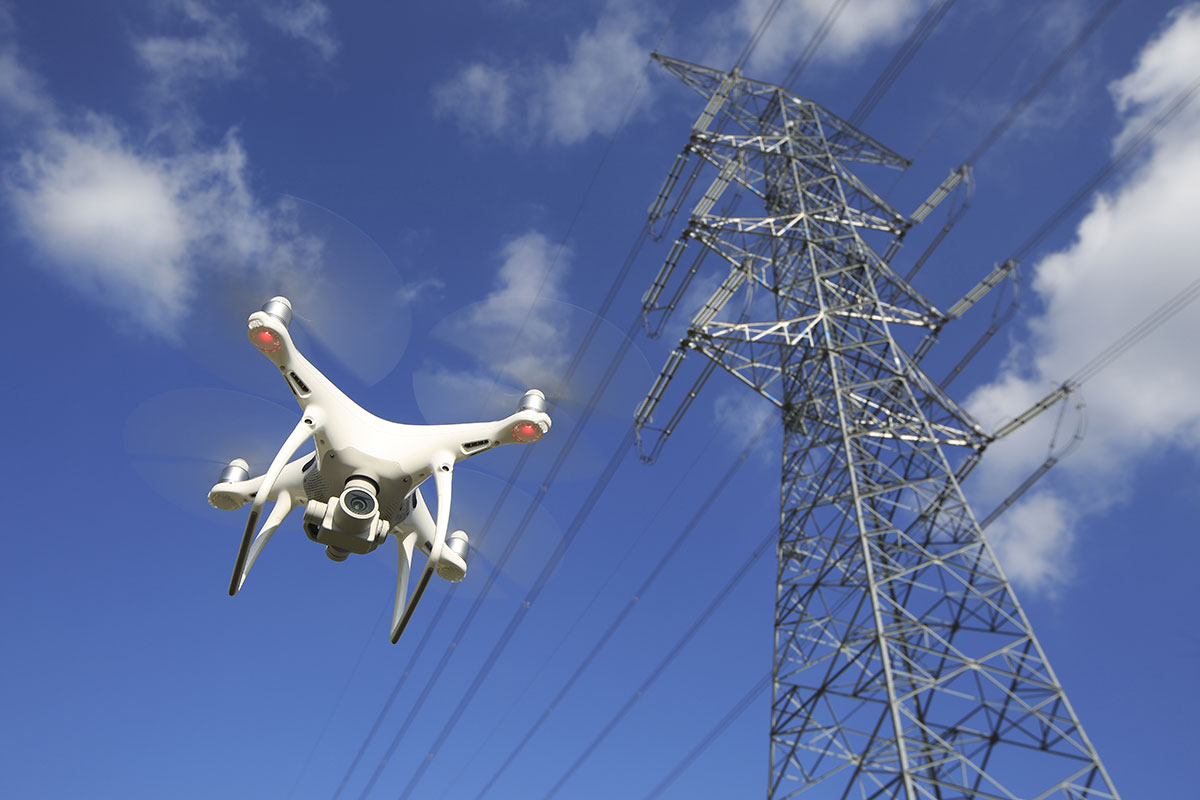Drone infrastructure inspection and surveys of difficult-to-access structures and pipelines deliver a more efficient, cost-effective and safer inspection process that can help mitigate risk. At the same time, you keep operations running as usual. Drones have become more popular as they are used in many applications. Many plants opt to perform drone inspections annually or biannually to compare the condition of their equipment over time. Drones are helping energy stakeholders to get an edge over their competition by collecting accurate, real-time information about energy-generating projects, equipment, and operations.
How We Can Use Drone for Infrastructure Inspection:
Hard-to-reach assets are viewed from close range, and in most cases, the job site remains fully operational to avoid inconvenience due to closure. The data collected by Drone for Infrastructure inspection is uploaded easily to cloud storage, so it can be archived and made available to all the shareholders.
Drones in civil engineering are the best alternative to traditional infrastructure inspection methods. They never compromise data quality. There are many scenarios where we can use drone infrastructure inspection; some of the most common uses are:
Inspections & Mapping:
An inspection and mapping service for cell towers, cooling towers, oil and gas infrastructure, solar farms, wind farms, power lines, and nuclear power plants. These drones are equipped with obstacle avoidance capabilities and can navigate very close structures, capturing minute details. You can get clear, high-resolution pictures or videos of a damaged product using an aerial drone. This allows the inspection team to collect more comprehensive data without exposing them to any risks.
Confined Space Tank Inspections
Accessing and inspecting the confined spaces in the oil and gas industry, construction sites, and other facilities is no longer difficult. You no longer need to send personnel into dangerous areas or confined spaces. Drones are remote-controlled aerial robots that can perform aerial inspections at a fraction of the time and cost of traditional methods.
Thermal Imaging
Thermal imaging is a tool that uses infrared technology to detect leaks, structural problems and energy loss in a fraction of the time it would take to inspect a building manually. With the use of drones, this technology can detect an area that may be prone to malfunction in the future.
2D/3D Modeling:
2D and 3D aerial maps, orthophoto mosaics and topographic surveys. UAVs allow you to capture detailed photos of a large area, identify obstacles and take advantage of geo-spatial data. Our team of certified API inspectors and trained UAV pilots provide expertise and personalized support to energy industry companies looking for drone solutions.
- Infrared and thermal images
- High-resolution pictures
- Inspection reports
- High definition videos
Drone Infrastructure Inspection Benefits:
Drones are capable of inspecting systems, such as windmills, boilers, cable trays, cooler towers, electrical equipment, flare stacks, pressure equipment, solar panels, storage tanks and other infrastructure, while they are in operation. With a drone, you can help save production time and costs.
In addition to reducing the risks associated with working at heights and in confined spaces, they’re designed to be more effective at getting work done than traditional equipment. Drones also assist in improving quality and safety while minimizing any negative environmental impact.
The Safer, Faster and Cheaper Way:
Remote inspection services using drones have revolutionized industrial asset management, especially in remote, dangerous and hard-to-reach locations. Traditional inspections in these locations often involve expensive helicopters, cranes and other equipment or sending staff into dangerous areas where the risk of accidents is high.
These audits will save you money because they’re just a part of your annual operation. If you use drone infrastructure inspection, it’s important to look at how you’re using them to streamline your operations. They are risky activities that also happen to be the most expensive to your business. You don’t need to get tied up in knots and be stuck inside a tiny, cramped building to inspect your assets, and you don’t have to worry about flying into an object or having your drone fly into a window and getting stuck.
Cost-Saving & Human Safety:
Drone technology is changing the world. With new uses like inspecting infrastructure, environmental damage, and natural disasters, drones are helping organizations achieve previously unavailable levels of visibility at a reasonable cost. Drones help improve worker safety and provide access to information in multiple industries, ranging from construction to mining to agriculture.
Drones decrease downtime, reduce risks for inspectors and provide accurate data on an asset’s life history. Inspections are designed to detect challenges that need to be corrected by your organization. In most cases, they won’t find challenges that need correcting. Inspecting all your warehouse equipment before using it is very important, but you may not be able to do it manually on your own.
